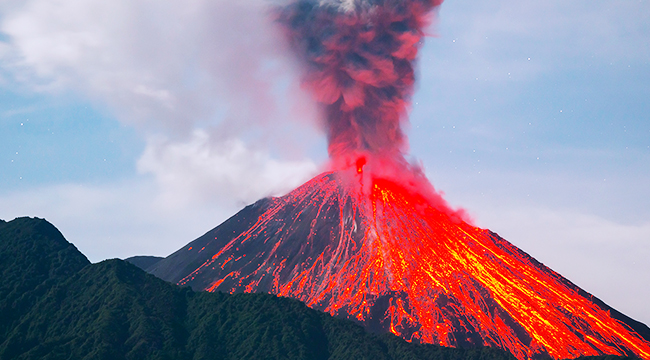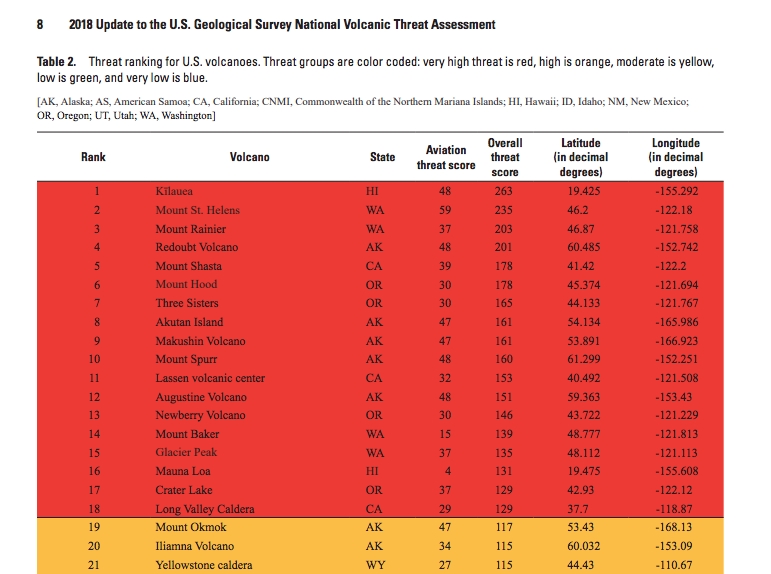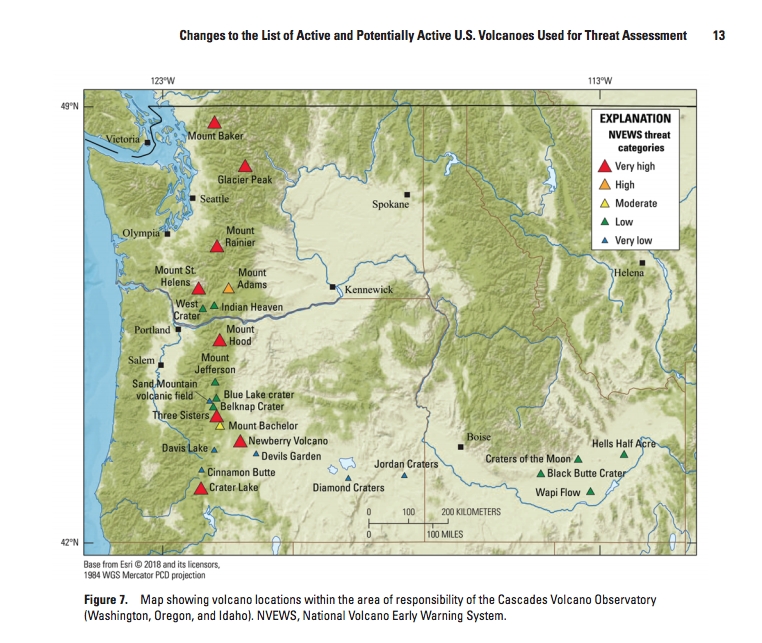
Volcanic eruptions aren’t usually something we spend a lot of time thinking about outside of the movie theater. But the USGS (United States Geological Survey) and teams of scientists spread throughout American universities need us to start. Over the last 38 years, the United States has experienced 120 eruptions and 52 smaller volcanic events. Even if you lose the “smaller” events from that equation, that’s still about three eruptions every year. Usually, those eruptions happen far away along Alaska’s Aleutian Island chain or seemingly far off in Hawai’i. Sometimes, however, it’s Mount St. Helens and within earshot of a huge city.
According to the USGS, the U.S. has 161 active volcanoes which pose a risk. That’s, well, a lot. Though not all volcanoes pose the same risk. So, the USGS spent years studying and assessing each volcano’s risk and last week they released their updated list on the most dangerous volcanoes in America.
Before we go on, it’s important to note that this list does not predict when a volcano might erupt (Meaning: just because your local volcano is a high risk, it does not mean you should assume the end of days are coming, tell your boss where to shove it, and throw your life savings away on one extravagant, final blowout where the party favors are brand, new cars). The list measures potential volcanic eruptions against the amount of damage they would inflict on people, the infrastructure, the economy, and even flying. In all, 24 factors were evaluated to determine a volcano’s “hazard potential and exposure of people and property to those hazards,” according the USGS. Recent seismic activity and frequency of eruption are part of those factors alongside the number of people living nearby and the likelihood of being able to evacuate safely in case of a volcanic event.

So, when the top five shook out, Hawaii’s Kīlauea ranked at number one due to its activity and proximity to a geothermal power plant (that it’d likely obliterate with a large eruption). Washington state’s Mount St. Helens and Mount Rainer ranked second and third respectively with only a tiny reduction in the danger level. Alaska’s Redoubt Volcano and California’s Mount Shasta rounded out the top five. 13 more volcanoes in Oregon, Washington, California, Alaska, and Hawaii all ranked in the “Very High Risk” category. That’s chilling.
Volcanoes like Mount Rainier ranked extremely high due to being less than 60 miles from downtown Seattle and Tacoma. That puts upwards of 500,000 people at risk should an eruption happen. The USGS notes that that means Rainier puts the most people at risk of any of the volcanoes on the list.

The Associated Press caught up with volcanologist Erik Klemetti to parse the USGS’ new rankings, what they mean, and if we’ll know when an event is on its way. Klemetti wasn’t exactly comforting. He points out that America is “sorely deficient in monitoring” among the top 18 high risk volcanoes. He continues, “many of the volcanoes in the Cascades of Oregon and Washington have few, if any, direct monitoring beyond one or two seismometers.” When asked about the monitoring at the other 143 volcanoes, Klemetti replied that “once you move down into the high and moderate threat [volcanoes], it gets even dicier.”
So, there are 161 active volcanoes in Alaska, Washington, Oregon, California, Utah, Wyoming, Arizona, New Mexico, Colorado, Hawai’i, the Marshall Islands, and American Samoa. There’s a good chance you might be living closer to one than you think. There’s no need to panic though. Like any area prone to natural disasters (hurricanes, tornadoes, etc) the most important thing you can do is be prepared. The CDC has a recommendation list for a volcano preparedness kit. There are standard things on the list like flashlights, batteries, and food/water and then there are some specifics like sturdy evacuation shoes and respiratory protection for falling ash.
Check out the USGS full report to find out how close you live to one and, then, maybe think about relocating somewhere sans volcanoes or, if you like your hometown, get that kit going.






